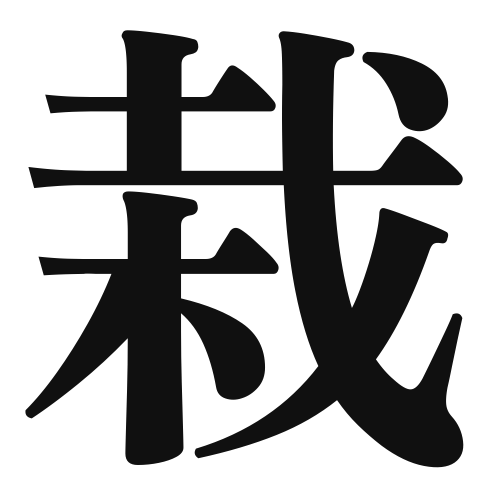1. Overview of Meaning
The kanji “栽” (sai) primarily means “to plant” or “to cultivate.” It is often associated with gardening, agriculture, and the act of nurturing plants.
2. Formation and Radical
Formation of the Kanji: The kanji “栽” is a compound character (会意文字) that combines elements representing trees and the act of planting. The left part “木” (tree) signifies the plant itself, while the right part “再” (again) suggests the action of planting anew.
Radical: The radical of “栽” is “木” (tree), which is commonly found in kanji related to plants and wood.
3. Examples of Usage
Common Words and Phrases: Some frequently used words that include “栽” are “栽培” (saibai – cultivation) and “栽植” (saishoku – planting).
Example Sentence in Daily Conversation: “庭で花を栽培しています。” (I am cultivating flowers in the garden.)
4. Synonyms and Antonyms
Similar Kanji: A similar kanji is “育” (iku), which means “to raise” or “to nurture.” While “栽” focuses on the act of planting, “育” emphasizes the growth and care of living things.
Opposite Kanji: An antonym is “枯” (ko), which means “to wither” or “to dry up,” representing the opposite of nurturing and growth.
5. Cultural and Historical Background
Relation to Japanese Culture: The act of planting and cultivating is deeply rooted in Japanese culture, reflecting the importance of nature and agriculture in daily life.
Proverbs and Idioms: One relevant proverb is “種を蒔く” (tane o maku – to sow seeds), which metaphorically means to prepare for future success or to invest effort for future rewards.
